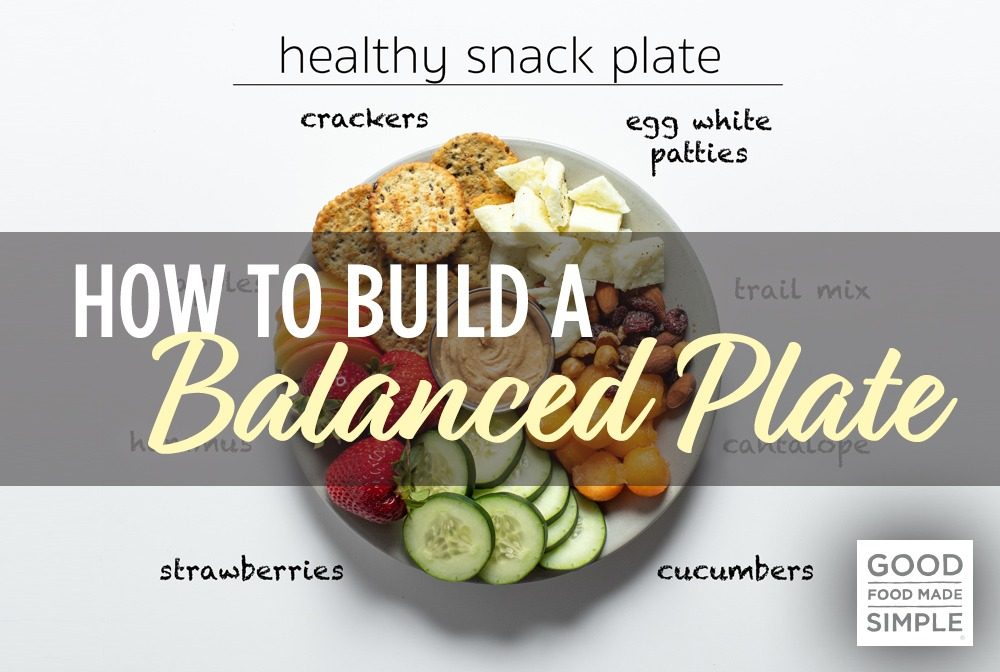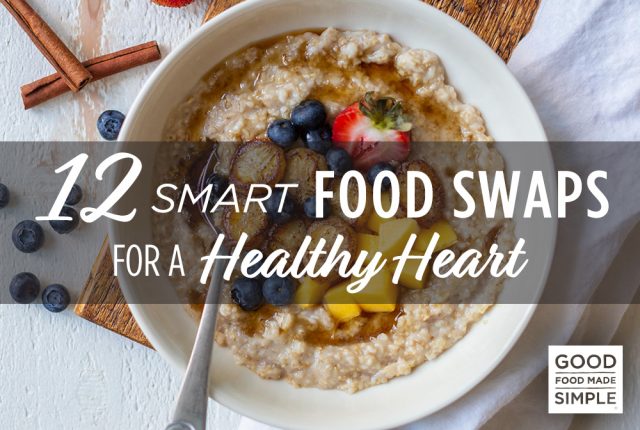
25 Active Date Ideas
While going on dates can certainly be fun, a typical night out with a romantic partner often ends up being focused on eating ...
read more
With so many various nutrition advice thrown your way, it can be hard to know what should go on your plate. Should you focus on healthy fats? Eliminate carbs? Eat raw? Meat or no meat? While certain health needs and preferences means every plate is going to look a little different, there’s still a way to build a balanced plate — regardless if you’re vegan or a meat lover.
A good place to start when trying to eat a balanced meal is USDA’s MyPlate. This is a government-mandated recommendation for how we should eat.
Interestingly, USDA food guides have evolved over time as we’ve become more aware of various food nutrients and how they impact our health. The early 20th century focused on establishing guidance based on food groups and household measures, and included things like foods that small children needed. As we entered the 1940’s and 1950’s more rules were set to include tips for nutrient adequacy, but these lacked serving sizes and did not include guidance on recommended fat, sugar, and calorie intake.
Fast forward to 1992, when the USDA introduced the Food Guide Pyramid, the previous food guide many people are familiar with today. That stuck around until 2011, until Michelle Obama and the Agriculture Secretary created what we use now: MyPlate.
Today, the US recognizes five food groups people should focus on consuming: fruits, veggies, grains, protein, and dairy. However, it’s not as simple as that, since each food group has subgroups as well. For example, the veggie category includes the following subgroups: dark green vegetables, like broccoli and kale, red and orange vegetables, such as acorn squash and red peppers, starchy vegetables, including green peas and potatoes, and other veggies, like avocado, mushrooms, and eggplant.
The general portion guidelines for MyPlate include:
With these guidelines in place, here are nine ways to make a healthy plate chock-full of all the nutrients you need.
Check for protein, fiber, and fat.
While fruits and veggies should take up half your plate, protein, fiber, and/or fat is what is going to keep you full. All of these ingredients take longer to digest in the body, ensuring you’re not rummaging through the fridge one hour after eating. Consider adding whole-grains to your plate for fiber — quinoa and brown rice are great here! — and consuming lean meat, beans, or lentils for protein. Don’t be afraid of eating some healthy fats as well, like avocado, full-fat yogurt, or nuts and seeds.
Consider how it’s cooked.
While half a plate of veggies is great, if they’re deep fried they lose some of the nutritional value. Don’t just think about what’s on the plate — consider how it’s prepared as well. Using healthy oil for cooking, like olive or avocado oil, is a great way to make things taste delicious while adding healthy fats to your meal. Sauteing and baking is better than frying. Or, considering eating your veggies raw while boiling your grains in water or vegetable stock.
Use your hands.
Clean your hands, then use ‘em to help figure out correct portion sizes. Generally, your palm equals a serving of protein (so if you need both hands to hold your steak, it’s definitely too much!). Your fist equals a serving of fiber, such as rice or another whole grain, while a serving of fat (oil, butter) should be about half of a thumb.
Green is great.
While veggies are important, getting those dark, leafy veggies (like kale and spinach) will have way more nutritional value than lighter-colored veggies. So choose kale and spinach over iceberg lettuce — it will be packed with vitamins A, C, K, magnesium, potassium, folate, and antioxidants. All the things your body is craving!
Get whole grains and unprocessed fiber.
While grains and fiber can easily be found in certain grocery aisles, a lot of fiber sources can be found in processed packages, like rice with flavor packaging, high-fiber bars, and cheddar popcorn. Focusing on getting fiber from unprocessed sources like air-popped popcorn, quinoa, brown rice, and sweet potatoes.
Drink more water.
Eating balanced should also imply drinking balanced, too. Avoid sugary sodas and juices, and drink up eight, 8 oz glasses of water a day. This will help with hydration, digestion, and maintaining a healthy metabolism.
Get colorful.
By making your plate colorful, you’re by default getting a lot of various nutrients your body needs. Choose the rainbow and get dark, leafy greens, red, orange, yellow, blue and purple fruits and veggies, and save white for potatoes and cauliflower, and other whole grains.
Think calcium, not dairy.
While MyPlate recommends dairy at every meal, there’s a debate around whether you truly need it or not. Many experts suggest focusing on getting calcium versus dairy — calcium can be found in whole foods like almonds, kale, and sardines. If you’re going for dairy, don’t be scared of the full-fat versions. Just pay attention to portion. Full-fat yogurt, almond milk, or shaved cheese also have great sources of calcium and dairy to get your body what it needs.
Still, remember to treat yo’self.
Part of any healthy diet includes saving room for guilt-free indulgences. Just because you’re eating healthy does not mean you can deprive yourself of the good stuff, like ice cream, french fries, or baked goods. Allow yourself some sweets and salty foods, just as long as you’re aware of portion control. Enjoy a square or two of dark chocolate at night, a glass of red wine, or a small bowl of tortilla chips with homemade salsa.

25 Active Date Ideas
While going on dates can certainly be fun, a typical night out with a romantic partner often ends up being focused on eating ...
read more
12 Smart Food Swaps For A Healthy Heart
February is American Heart Month, and one of the best ways to maintain good heart health is to watch what you eat. Instead of...
read more
Starting the New Year With the ‘Right’ Mindset
With the holiday finally over and the new year upon us, I’d be shocked if you haven’t thought about New Year's Resoluti...
read more